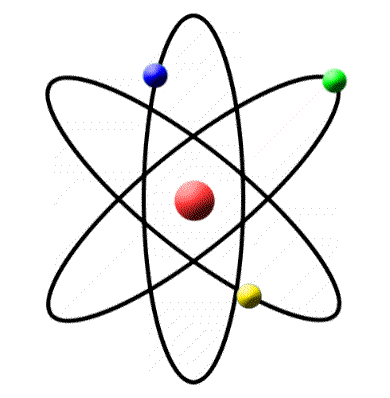If the wavelength of 1st line of Balmer series of hydrogen is 6561 ?, the wavelength of the 2 line of series will be
- 9780 ?
- 4860 ?
- 8857 ?
- 4429 ?
The Correct Option is B
Solution and Explanation
$\frac{1}{\lambda}=R\left(\frac{1}{2^{2}}-\frac{1}{3^{2}}\right)=\frac{5R}{36}$
For the second line of Balmer series.
$\frac{1}{\lambda}=R\left(\frac{1}{2^{2}}-\frac{1}{4^{2}}\right)=\frac{3R}{16}$
$\therefore\frac{\lambda_{2}}{\lambda_{1}}=\frac{5R/36}{3R/16}=\frac{20}{27};$
or $\lambda_{2}=\frac{20}{27}\left(6561 ?\right)=4860 ?$
Top Questions on Atoms
- The ratio of the shortest wavelength of Balmer series to the shortest wavelength of Lyman series for hydrogen atom is :
- In hydrogen like system the ratio of coulombian force and gravitational force between an electron and a proton is in the order of:
- If the wavelength of the first member of the Lyman series of hydrogen is \( \lambda \). The wavelength of the second member will be:
- A hydrogen atom in ground state is given an energy of 10.2 eV. How many spectral lines will be emitted due to transition of electrons ?
- If Rydberg’s constant is \( R \), the longest wavelength of radiation in Paschen series will be \( \frac{\alpha}{7R} \), where \( \alpha = \_\_\_\_\_\_\_ \).
Questions Asked in JIPMER exam
- Binomial nomenclature was first introduced by
- JIPMER - 2015
- KCET - 2022
- Diversity In The Living World
- A convex lens $'A'$ of focal length $20\, cm$ and a concave lens $'B'$ of focal length $5\, cm$ are kept along the same axis with a distance $'d'$ between them. If a parallel beam of light falling on $'A'$ leaves $'B'$ as a parallel beam, then the distance $'d'$ in cm will be :
- JIPMER - 2021
- Spherical Mirrors
- A bacterial flagellum is composed of
- JIPMER - 2021
- Prokaryotic Cells
- $2,4-DNP $ test can be used to identify :
- JIPMER - 2021
- Chemical Reactions
- How many moles of acidified $K_2Cr_2O_7$ is required to liberate $6$ moles of $I_2$ from an aqueous solution of $I^-$ ?
- JIPMER - 2020
- Mole concept and Molar Masses
Concepts Used:
Atoms
- The smallest unit of matter indivisible by chemical means is known as an atom.
- The fundamental building block of a chemical element.
- The smallest possible unit of an element that still has all the chemical properties of that element.
- An atom is consisting of a nucleus surrounded by one or more shells of electrons.
- Word origin: from the Greek word atomos, which means uncuttable, something that cannot be divided further.
All matter we encounter in everyday life consists of smallest units called atoms – the air we breath consists of a wildly careening crowd of little groups of atoms, my computer’s keyboard of a tangle of atom chains, the metal surface it rests on is a crystal lattice of atoms. All the variety of matter consists of less than hundred species of atoms (in other words: less than a hundred different chemical elements).

Every atom consists of an nucleus surrounded by a cloud of electrons. Nearly all of the atom’s mass is concentrated in its nucleus, while the structure of the electron cloud determines how the atom can bind to other atoms (in other words: its chemical properties). Every chemical element can be defined via a characteristic number of protons in its nucleus. Atoms that have lost some of their usual number of electrons are called ions. Atoms are extremely small (typical diameters are in the region of tenths of a billionth of a metre = 10-10 metres), and to describe their properties and behaviour, one has to resort to quantum theory.



